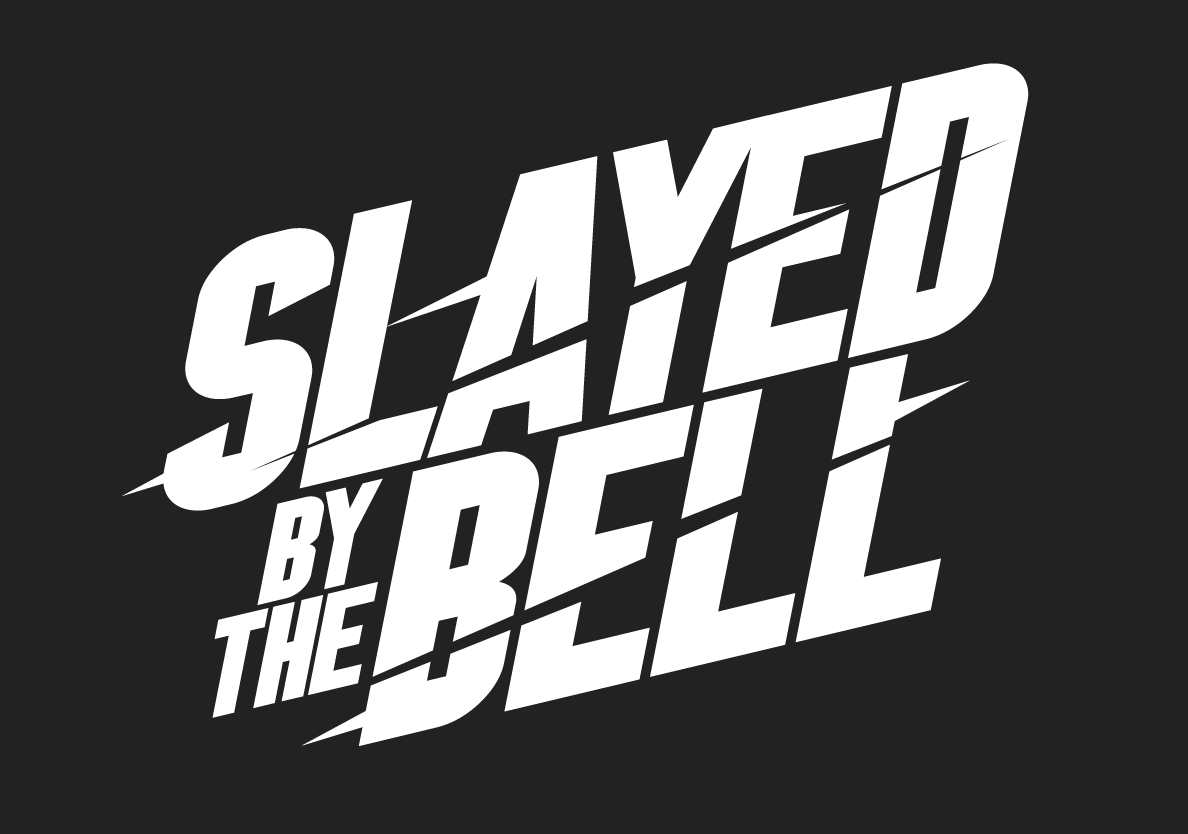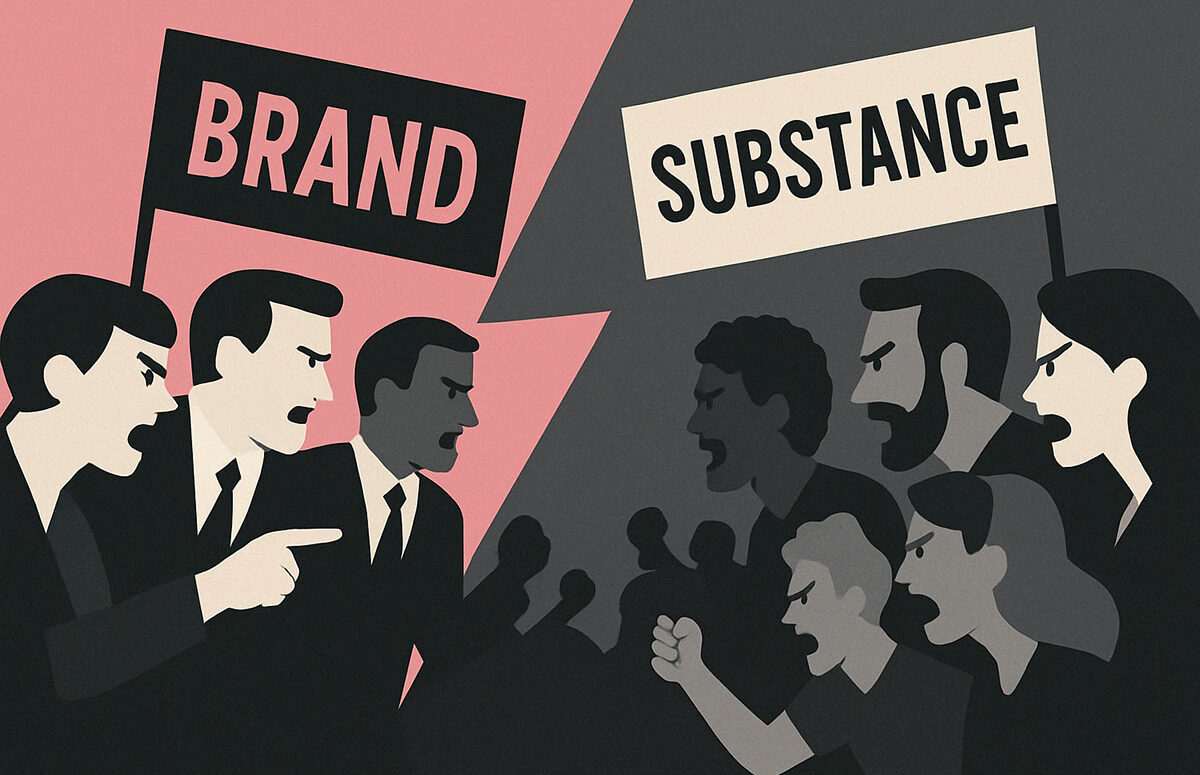How Branding Eclipses Educational Integrity
The cry of ‘Just do it’ echoes from SLT as they fuel a frustrating trend, but are schools prioritising branding over substance? Schools, especially academies, are eager to establish a unique identity, often relying on shit slogans and bullshit-branded policies, and insisting on brand recognition. But news flash: brand recognition is earned, not imposed. And, beneath the surface lies a significant problem—a gap between branding efforts and the actual educational value they claim to offer.
Problems
The pervasive branding frenzy infiltrating education presents a perplexing dilemma. While schools allocate substantial money/resources to cultivate polished images, enforce branded policies, and procure Tony & Guy contracts to keep their CEOs’ hair adequately coiffured, the fundamental focus on student learning often diminishes. This phenomenon is best exemplified by senior leadership spending more time overseeing adherence to “brand guidelines” during classroom visits than providing substantive support to teachers—an analogy reminiscent of the “Soup Nazi” episode from Seinfeld. This fixation on branding manifests in various ways, including the insistence on students memorising the names of branded initiatives, (such as the “5 pillars” policy), without truly comprehending their educational significance. Anyone would think students are studying for a formal qualification in academy brand recognition. Consequently, education becomes superficially engaged, prioritising recognition over comprehension.
Moreover, students not only face expectations to engage with the school’s brand but are also pressured to memorise associated branding elements like colours, mnemonics, acronyms and logos without name labels—as if Nike’s decades-long process of establishing logo recognition without the name alongside the swoosh ever happened. The haste with which schools anticipate achieving this feat, often within weeks or months of introducing new policies, reflects a significant level of hubris that plagues school leadership.
‘Tried to bring the light to a world of darkness, shout out to the brands that started out as harmless’
Talib Kweli – Art Imitates Life
Causes
The obsession with branding stems from various underlying causes, each contributing to the proliferation of superficial policies and initiatives that prioritise recognition over substance. One key factor is the self-enforced pressure on schools to distinguish themselves in a competitive landscape. With schools vying for students and funding, there’s a tendency to resort to branding as a means of differentiation (some schools even employ a head of PR – what the fuck?).
Another contributing factor is the phenomenon of ordinary teachers who have manoeuvred their way into CEO positions, suddenly finding themselves with a “project” where they can apply their shit ideas—imagine a room packed with CEOs frantically brainstorming effective straplines before fucking off for their afternoon golf outing “now watch this drive”.
Additionally, the desire for validation and recognition from stakeholders, including parents and governing bodies, fuels the push to establish a distinct brand identity. Consequently, schools adopt branded policies and initiatives without fully considering their educational value, leading to a disconnect between branding efforts and genuine learning outcomes. Furthermore, their absence of formal training in branding often results in schools resembling the aftermath of the branding equivalent of the Stay Puft Marshmallow Man exploding all over the school site.
Effects
The impact of this branding frenzy on students is profound, affecting their learning experiences and overall academic development. When students are pressured to be more focused on recognising and reciting the names of branded initiatives, such as the “5 pillars” policy, they will overlook the substantive concepts they represent. This superficial engagement with educational content hampers their ability to grasp the underlying principles and apply them in meaningful ways. Consequently, students may miss out on deeper learning opportunities and fail to develop critical thinking skills and problem-solving abilities. Moreover, the emphasis on branding can create a culture of compliance rather than genuine inquiry, stifling students’ curiosity and autonomy in their learning journey. This pressure for conformity extends to teachers, who are coerced into enforcing brand guidelines or facing consequences. In turn, students are burdened with the expectation to equally master branding elements, and if they fall short, then the teacher, as fucking usual, is to blame. Students are supposed to be learning about *insert subject name* not fucking about trying to recognise which logo represents which aspect of a particular policy.
Solutions
To address this branding paradox in education, a paradigm shift is needed — one that re-centers the focus on genuine learning and student well-being. Schools must resist the temptation to prioritise branding over substance and instead focus on policies and initiatives that tangibly impact student learning outcomes. Perhaps the CEOs could be assigned a simple task to keep them occupied until their afternoon golf outing, sparing us from the fruits of their bullshit brainstorming sessions? Additionally, schools may need to revisit and refine existing branding strategies to ensure alignment with the educational mission and values of the institution. Educators should be empowered to design authentic learning experiences that prioritise understanding and application over memorisation and regurgitation of whole school policies. And besides, it’s worth noting that these policies come and go faster than new conservative prime ministers on crystal meth
Conclusion
In the face of mounting pressures and competing priorities, it is time for education to reclaim its purpose and refocus on what truly matters—student learning and growth. By breaking free of the branding obsession and embracing a more authentic approach to education, schools can create environments where students thrive intellectually, emotionally, and socially. We need to work together to build a future where education is defined not by slogans and branding, but by its transformative impact on students’ lives.
In summary, the issue of branding in education not only affects students’ learning experiences but also raises questions about the true purpose of education. The expectation for students to memorise branded policies and initiatives may serve the interests of branding efforts and CEO-acting teachers more than it benefits students’ learning. Teachers play a crucial role in guiding students’ understanding and application of these principles, ensuring that branding efforts align with meaningful learning experiences. Alternative approaches, such as engaging students in policy implementation and balancing branding with education, offer potential solutions to address the branding paradox in education and prioritise genuine learning outcomes for students.

